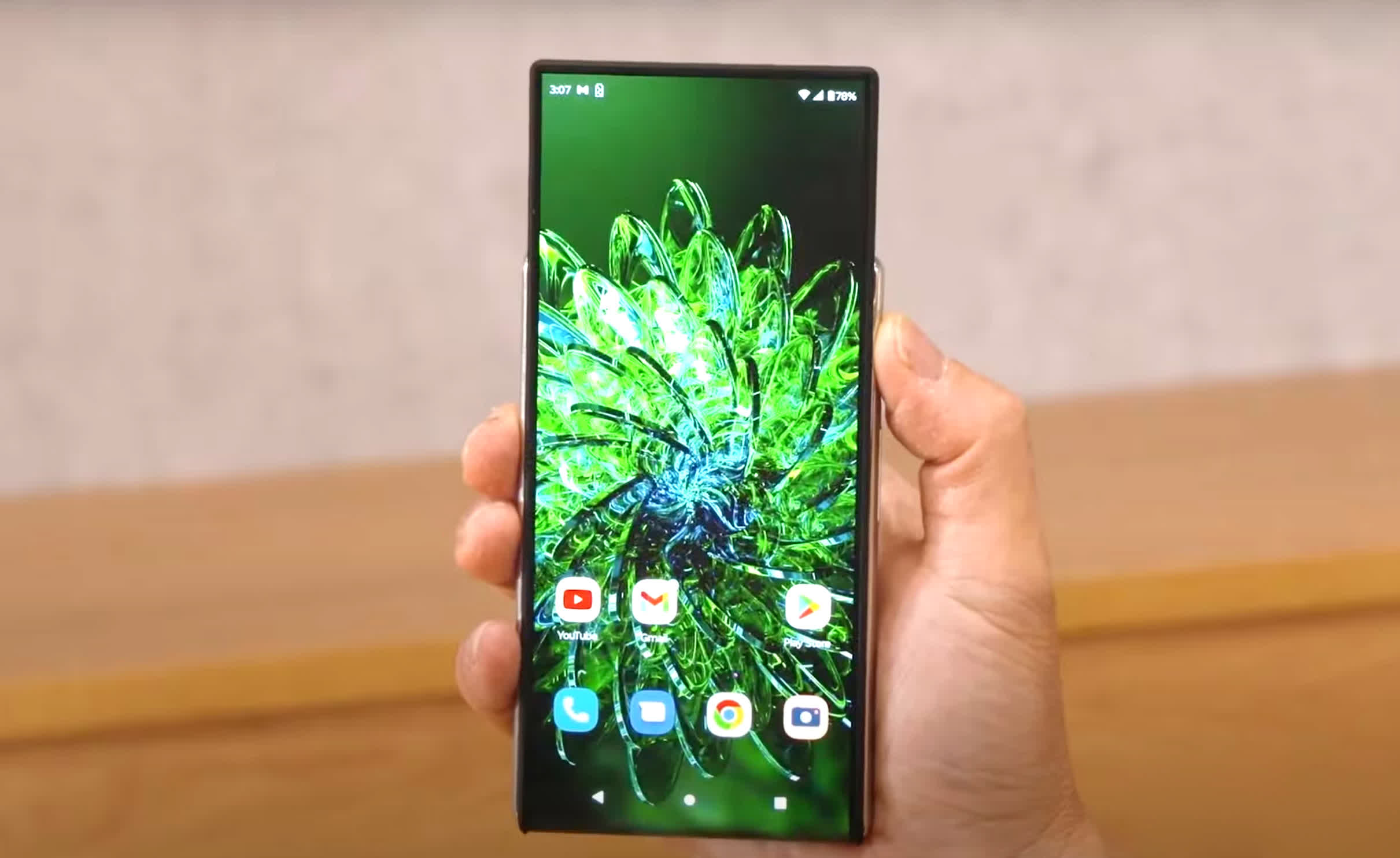Forward-looking: Leading tech providers around the globe have invested lots of time and money into next-gen display technology, and Lenovo is no exception. On Tuesday during its Tech World 22 virtual event, Lenovo executive Luca Rossi showcased two proof of concept devices featuring rollable OLED screens. The first was a rollable smartphone concept from the team at 312 Labs, Motorola's internal R&D group (Lenovo bought Motorola Mobility from Google for $2.91 billion in 2014).
The concept builds upon the display and mechanical innovations featured in Moto's foldable devices, but with a twist. At rest, the handset's display measures just over four inches tall and is described as extremely pocketable. With the press of a button, the screen expands vertically to 6.5 inches, making it ideal for media consumption, web surfing and gaming.
Rossi also shared a rollable laptop concept that expands vertically to take multitasking, browsing and mobility to new heights. Both are still in the early concept stage, but the potential for something special is certainly brewing.
Motorola's decision to have the phone's screen expand vertically rather than horizontally like we saw on the canceled LG rollable phone is arguably the best implementation of a rollable display to date. I do wish Rossi would have shown the sides and back of the device to get a better idea of how thick it is and how it works. Above all, it looks practical and that is more than you can say about most devices with flexible OLED panels.
As for the laptop, I believe a horizontally-expanding screen would have been the better route. Having the panel extend vertically is not going to appeal to everyone and I have concerns about it becoming top-heavy when fully extended. A display that stretches out to one side - or heck, make it expand from both sides simultaneously - could really help boost mobile productivity.
Here's to hoping Lenovo and Motorola continue to innovate on these concepts and eventually land on something worthy of bringing to market.
